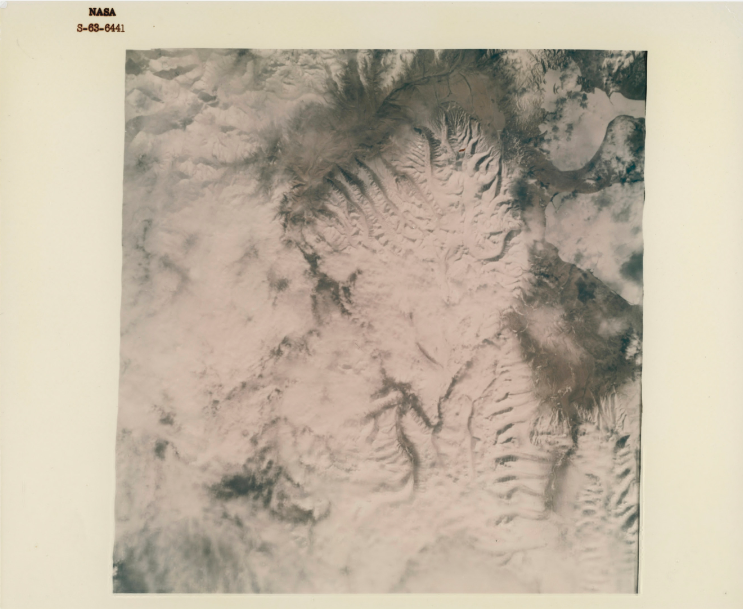Space Mission
Mercury Atlas 9, 15-16 May 1963
Photographer
Gordon Cooper
Photo Description
Vintage chromogenic print on fiber-based Kodak paper; Numbered to upper margin ‘NASA S-63-6441’ with ‘A Kodak Paper’ watermarks to verso.
8 h × 10 w in (20 × 25 cm)
Essay
The birth of space photography: Gordon Cooper’s film was the first by an astronaut to be analyzed and described frame by frame by NASA, in effect launching the agency’s photographic technology department in Houston.
The snow-covered Himalayas mountain range as photographed from the Faith 7 capsule by Gordon Cooper with the first NASA-modified Hasselblad 500C camera (first introduced by Walter Schirra who mostly captured overexposed photographs during his time in space) and its 80mm lens, and GAF anscochrome reversal film.
I was the first to pass over the Himalayas during daylight hours. I was supposed to be asleep; I had my system all shut down so that I wasn’t doing any activities. But during three hours of my sleep period I was just tweaking a little tweaker on the thruster so I could get my attitude to film the Himalayas.”
—Gordon Cooper (Schick and Van Haaften, pg. 28)
Prior to the introduction of the Hasselblad, NASA lacked a defined photography program. It was not until Walter Schirra, a known camera enthusiast, sought a precision instrument to accompany him on his Mercury-Atlas 8 mission that NASA’s photographic identity began to take shape.
Schirra’s experiments on MA-8 paved the way for Gordon Cooper’s use of the same NASA-modified Hasselblad camera in space. Cooper’s longer Mercury-Atlas 9 flight (22 orbits) allowed him to carefully frame his photographs.
“I was the first pilot to go off stabilization systems and go where I wanted, so I made lots of pictures.” He recalled a NASA memo stating that: “‘If an astronaut desires, he may carry a camera.’ That’s the importance they gave to photography… It was great to be able to bring home some of those images to people who couldn’t be up there in orbit and see those kind of things. I think NASA finally swung around to realizing the importance of photography; even the diehards finally came around, admitting it had about the greatest impact of anything going.”
—Gordon Cooper (Schick and Van Haaften, ppg. 26-30)
